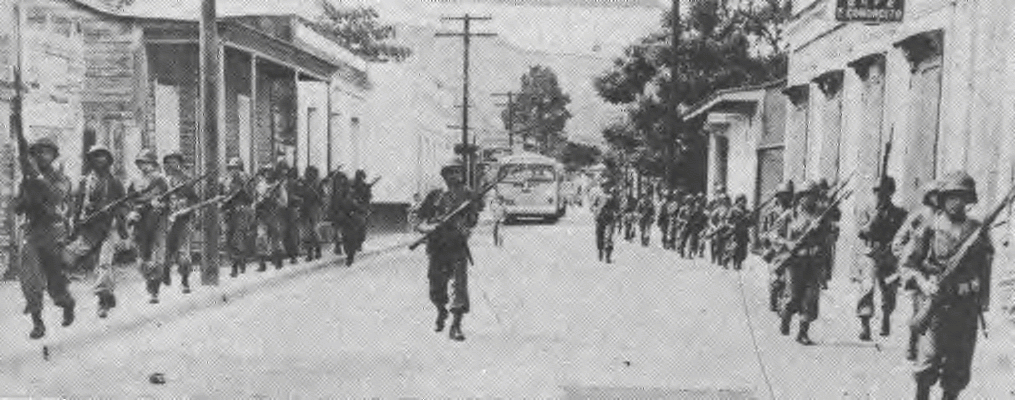



It was back — actually, the events leading up to it are important to understand, that in 19— this is in the post-World War II period, as many of the countries that were coming out of World War II were forced by the events of having to win the war, World War II, against the Nazis, to begin granting independence or autonomy to their colonies — England to the Commonwealth, to India and all of its other colonies; France to its overseas colonies; and the United States attempted after World War II to claim that Puerto Rico had been granted autonomy. And in 1948, the first Puerto Rican elected governor, Muñoz Marín, comes into power, but the island is still ruled by the United States and by Congress and is militarily occupied, so that the Nationalist Party was part of this anti-colonial movement of the ’40s and ’50s. And on October 30th, 1950, the Nationalists rise up against the United States in a planned insurrection.
It actually started a couple of nights before, in the morning of October 27th, when some Puerto Rican police intercept a caravan of Nationalists, including the Nationalist leader, Pedro Albizu Campos, and arrest some of them. And the Nationalists immediately decide it’s time to revolt, because that summer, in July of 1950, Congress had passed what’s known as Law 600, which was, in essence, ordering that the Puerto Rican people have a referendum on a new constitution. And that referendum was to take place the following year, and voter registration for that referendum was to begin on November 4th and 5th of 1950. So the Nationalists saw this referendum as illegitimate, and they began the uprising first with a planned prison uprising in the main prison in Puerto Rico, La Princesa, as a hundred inmates broke free from the prison, and then with revolts in about eight cities in Puerto Rico, including the town of Jayuya, which was the main center.
That’s why it’s called the Revolt of Jayuya. And at the time, the Puerto Rican government had already adopted a law to muzzle the Nationalists. It was called the Gag Law of 1948, which made it a crime to even advocate independence or the overthrow of US rule in Puerto Rico. And so, as a result, the governor, Marín, Muñoz Marín, called in the National Guard. Two towns were bombed by the National Guard: Jayuya and Utuado. The Nationalists attacked the governor’s mansion. They burned down a couple of police precincts. And eventually, about twenty-five people were killed.
— Transcript of Juan Gonzalez's interview for Democracy Now. Watch below:

Puerto Rico National Guard troops in Jayuya, Puerto Rico, during the 1950 Jayuya Uprising. Photograp...

Removal of the Puerto Rican Flag by U.S. Military in Jayuya, Puerto Rico, during the Jayuya Uprising...

November 1, 1950 edition of the newspaper "El Imparcial" of Puerto Rico.

The attack of La Fortaleza by Puerto Rican Nationalists in San Juan 1950. Originally published on El...

This timespace is inspired by the 7th chapter of the book How to Hide an Empire, by Daniel Immerwahr. It tells the life of Puerto Rican nationalist Pedro Albizu Campos in the context of other nationalist movements and U.S. interventions in Latin America.